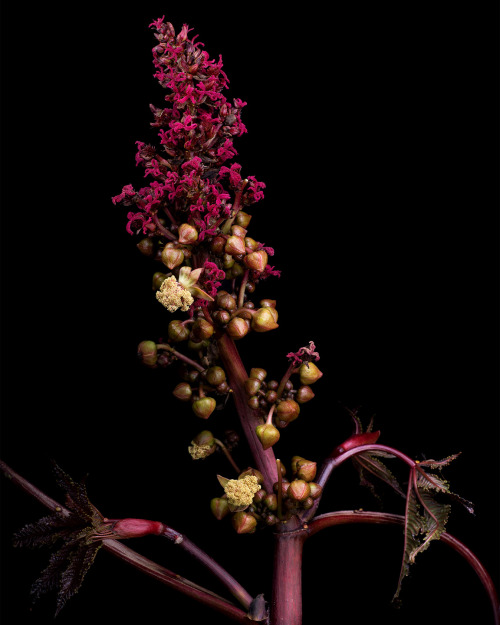Apparently continuing the theme of lethal plants, today I am sharing Ricinus communis or ‘cast
Apparently continuing the theme of lethal plants, today I am sharing Ricinus communis or ‘castor bean,’ which is a member of Euphorbiaceae, a family which is perhaps best known for its garden representatives of spotted spurge (a persistent weed) and fire sticks (Euphorbia tirucalli). In some regions members of this family have convergently evolved to resemble cacti, but Ricinus could hardly be more different, to some resembling Cannabis plants. Native to the Mediterranean basin, Africa, and India, it is naturalized throughout the world and stands prominently in the Californian landscape.While all of the spurge family possess irritating toxic sap, the castor bean is well-known for producing an exceedingly lethal compound found densely in its seeds – ricin. The compound is so harmful that the estimated lethal oral dose for most humans is around 80mg or less. Due to the high toxicity (it can also be absorbed through skin, eyes, and wounds) some regions have laws restricting the cultivation or harvesting of the plant. Such is its reputation that it even has broken into the entertainment industry, being used for example in Breaking Bad. Despite the presence of such a hazardous compound in the fruit, the plant has great commercial value for another component composing around 50% of the seed: castor oil. This product has a huge variety of commercial applications and is even used in soaps, perfumes, and pharmaceuticals where it is largely safe since ricin is not fat-soluble. Until I spent time photographing this plant’s flowers, I didn’t really notice or appreciate its interesting floral anatomy or the vibrance of the female flowers.I still think it’s a rather ugly plant. -- source link
Tumblr Blog : conspectusargosy.tumblr.com
#castor#ricinus#botany#glowing#fluorescent#ultraviolet#euphorbia#euphorbeaceae#california

